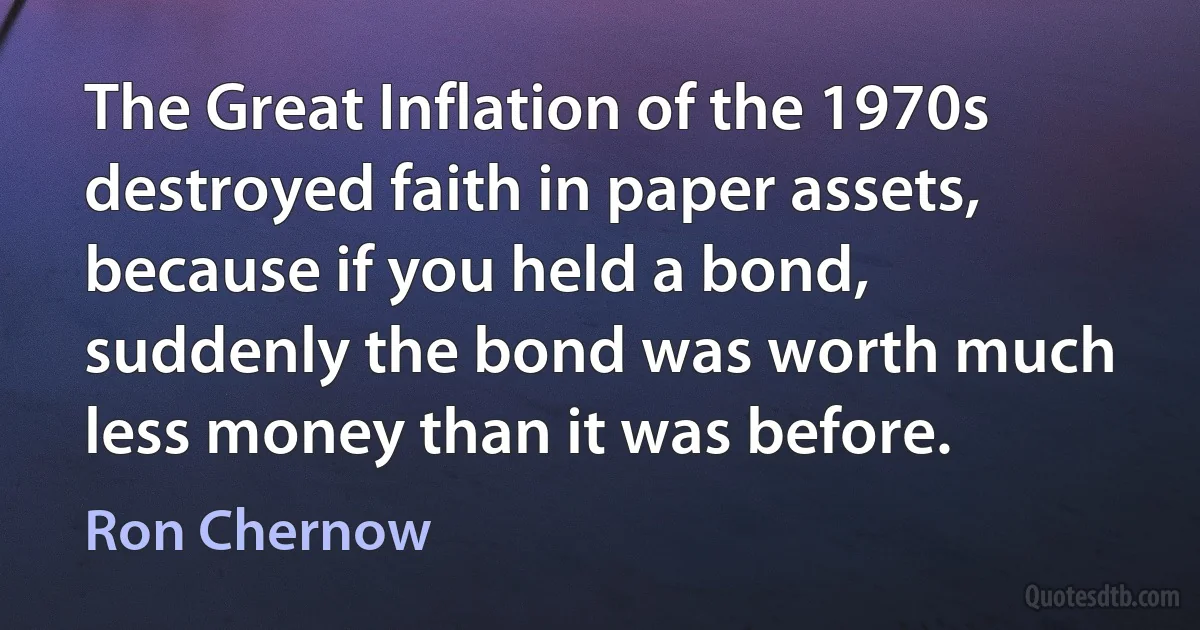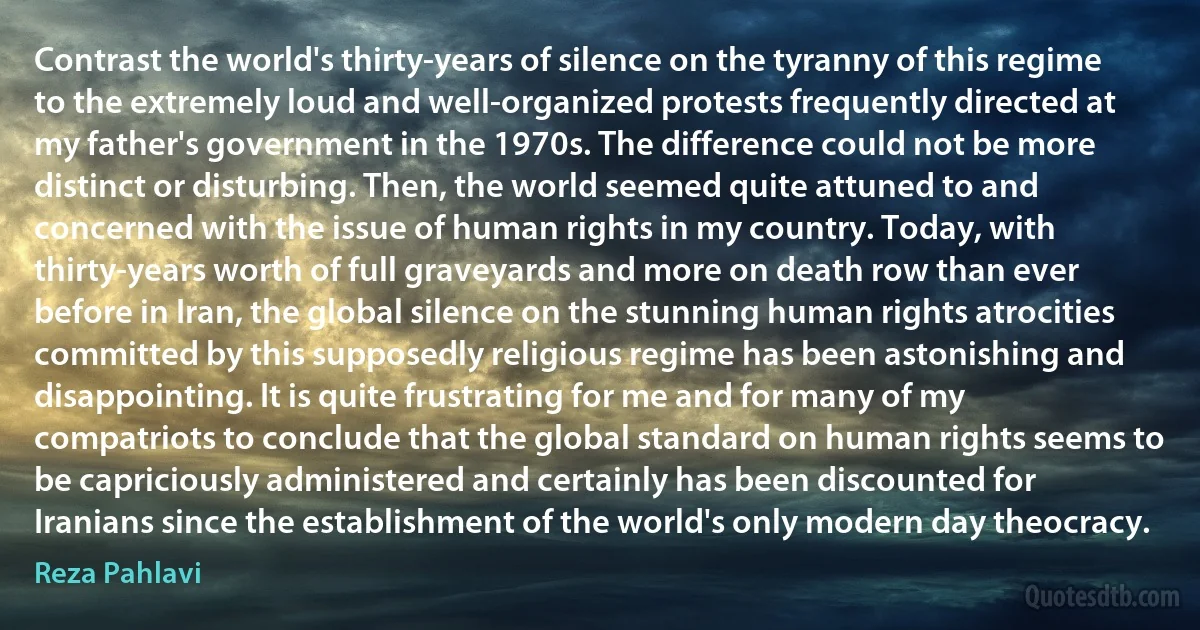1970s Quotes - page 2
The proof of the pudding is in the eating. There was a widespread myth of the 1970s, a myth along Tom Kuhn's (1962) Structure of Scientific Revolutions lines. The Keynesianism, which worked so well in Camelot and brought forth a long epoch of price-level stability with good Q growth and nearly full employment, gave way to a new and quite different macro view after 1966. A new paradigm, monistic monetarism, so the tale narrates, gave a better fit. And therefore King Keynes lost self esteem and public esteem. The King is dead. Long live King Milton!
Contemplate the true facts. Examine 10 prominent best forecasting models 1950 to 1980: Wharton, Townsend–Greenspan, Michigan Model, St. Louis Reserve Bank, Citibank Economic Department under Walter Wriston's choice of Lief Olson, et cetera. ... M did matter as for almost everyone. But never did M alone matter systemically, as post-1950 Friedman monetarism professed.

Paul Samuelson
One interesting footnote: although Friedman made great strides in macroeconomics by applying the concept of individual rationality, he also knew where to stop. In the 1970s, some economists pushed Friedman's analysis of inflation even further, arguing that there is no usable trade-off between inflation and unemployment even in the short run, because people will anticipate government actions and build that anticipation, as well as past experience, into their price-setting and wage-bargaining. This doctrine, known as "rational expectations,” swept through much of academic economics. But Friedman never went there.

Paul Krugman
The 1960s and early 1970s were a time of social revolution in America, and President Nixon, by ending the draft and ending the Vietnam war, presided over what one columnist called the "cooling of America.” But if Hillary Clinton takes power, and continues America on her present course, which a majority of Americans rejected in the primaries, there is going to a bad moon rising.

Pat Buchanan
A system designed to protect individual liberty will have no punishments for any group and no privileges. Today, I think inner-city folks and minorities are punished unfairly in the war on drugs.
For instance, blacks make up 14% of those who use drugs, yet 36 percent of those arrested are Blacks and it ends up that 63% of those who finally end up in prison are Blacks. This has to change.
We don't have to have more courts and more prisons. We need to repeal the whole war on drugs. It isn't working. We have already spent over $400 billion since the early 1970s, and it is wasted money. Prohibition didn't work. Prohibition on drugs doesn't work. So we need to come to our senses. And, absolutely, it's a disease. We don't treat alcoholics like this. This is a disease, and we should orient ourselves to this. That is one way you could have equal justice under the law.

Ron Paul
It's time to rethink the whole system of HMOs and managed care. This entire unnecessary level of corporatism rakes off profits and worsens the quality of care. But HMOs did not arise in the free market; they are creatures of government interference in health care dating to the 1970s. These non-market institutions have gained control over medical care through collusion between organized medicine, politicians, and drug companies, in an effort to move America toward "free” universal health care.

Ron Paul
It was found [in the 1970s], unexpectedly and without anyone really having a concept for it, that the rules of perturbation theory can be changed in a way that makes relativistic quantum gravity inevitable rather than impossible. The change is made by replacing point particles by strings. Then Feynman graphs are replaced by Riemann surfaces, which are smooth - unlike the graphs, which have singularities at interaction vertices. The Riemann surfaces can degenerate to graphs in many different ways. In field theory, the interactions occur at the vertices of a Feynman graph. By contrast, in string theory, the interaction is encoded globally, in the topology of a Riemann surface, any small piece of which is like any other. This is reminiscent of how non-linearities are encoded globally in twistor theory.

Edward Witten
One of the most characteristic new developments since the 1970s has been the rise of a type of religiosity that we usually call "fundamentalism” in most of the major world religions, including the three religions of God. A highly political spirituality, it is literal and intolerant in its vision. In the United States, which has always been prone to extremist and apocalyptic enthusiasm, Christian fundamentalism has attached itself to the New Right. Fundamentalists campaign for the abolition of legal abortion and for a hard line on moral and social decency.

Karen Armstrong
Yes, his father was a Nazi; yes, he has been a consistent supporter and friend of renowned Nazi Kurt Waldheim. All right, so what if the rumors--confirmed for SPY by a businessman and longtime friend of Arnold's--that in the 1970s he enjoyed playing and giving away records of Hitler's speeches are true?

Arnold Schwarzenegger
For a period of roughly 35 years, Keynesian theory provided a central paradigm for macroeconomists, and considerable progress was made on several empirical fronts. It was widely recognized that some of the ingredients of Keynesian economics (e.g. money illusion and/or nominal wage rigidity) rested on slender to non-existent microtheoretic foundations; and there were always dissenters. But, thought of as a collection of empirical regularities that fit together into a coherent whole, the theory worked tolerably well. In the 1970s, however, the Keynesian paradigm was rejected by a great many academic economists, especially in the United States, in favour of what we now call new classical economics. By about 1980, it was hard to find an American academic macroeconomist under the age of 40 who professed to be a Keynesian. That was an astonishing intellectual turnabout in less than a decade, an intellectual revolution for sure.

Alan Blinder
Even while I was a Navy SEAL, I participated in the 1970s peace movement. I marched at peace rallies. I admit it wasn't so much because of my great love of peace as it was because of my great love of female companionship. To the women in the movement, I was the poor beleaguered victim of the system, sent off against his will to fight this horrible war. They didn't realize that the navy had no draft!

Jesse Ventura
From the end of World War I until the middle of the middle of the 1970s, French public life was shaped and misshaped by three overlapping and intersecting forms of collective and individual irresponsibility. The first of these was political. Reading the history of interwar France, one is struck again and again by the incompetence, the insouciance and the culpable negligence of the men who governed the country and represented its citizens. This is not a political observation, in the partisan sense, but rather a cultural one.

Tony Judt
My broad position remains firmly libertarian, sceptical of official cover-ups and uncompromisingly internationalist, believing sovereignty to be an almost total illusion in the modern world, although both expecting and welcoming the continuance of strong differences in national traditions and behaviour. I distrust the deification of the enterprise culture. I think there are more limitations to the wisdom of the market than were dreamt of in Mrs Thatcher's philosophy. I believe that levels of taxation on the prosperous, having been too high for many years (including my own period at the Treasury), are now too low for the provision of decent public services. And I think the privatisation of near monopolies is about as irrelevant as (and sometimes worse than) were the Labour Party's proposals for further nationalisation in the 1970s and early 1980s.

Roy Jenkins
It is worth recalling that during the 1960s, and again in the 1970s, Britain's growth rate was the lowest of all the major European economies. By contrast, during the 1980s, our growth rate has been the highest of all the major European economies. This greatly improved growth performance has been accompanied by falling inflation, which at 3½ per cent. in 1986 reached the lowest figure for almost 20 years.

Nigel Lawson
He reminds me of that excitement when De Niro and I stumbled upon a way of working together - a similar kind of energy to the actors in the 1970s. It's very rare for me to find that kind of connection again. Leo will give me the emotion where I least expect it and could only hope for it about three or four scenes. And he can do it take after take.

Leonardo DiCaprio
When I thought of myself as a writer in the 1960s, I questioned what made me go from the left to the right margin, from one page to another. As I thought of the space I was also thinking about time. Then I thought: ‘Why am I limiting myself to a piece of paper when there's a world out there?' I focused on performance in the early 1970s because the common language of the time was ‘finding oneself.' In a time like that, what else could I do but turn in on myself and then go from me to you? Photography, film, and video were sidesteps–spaces in front of you–whereas I was more interested in the space where you were in the middle. Now I'm involved with peopled spaces–that's design and architecture.

Vito Acconci



